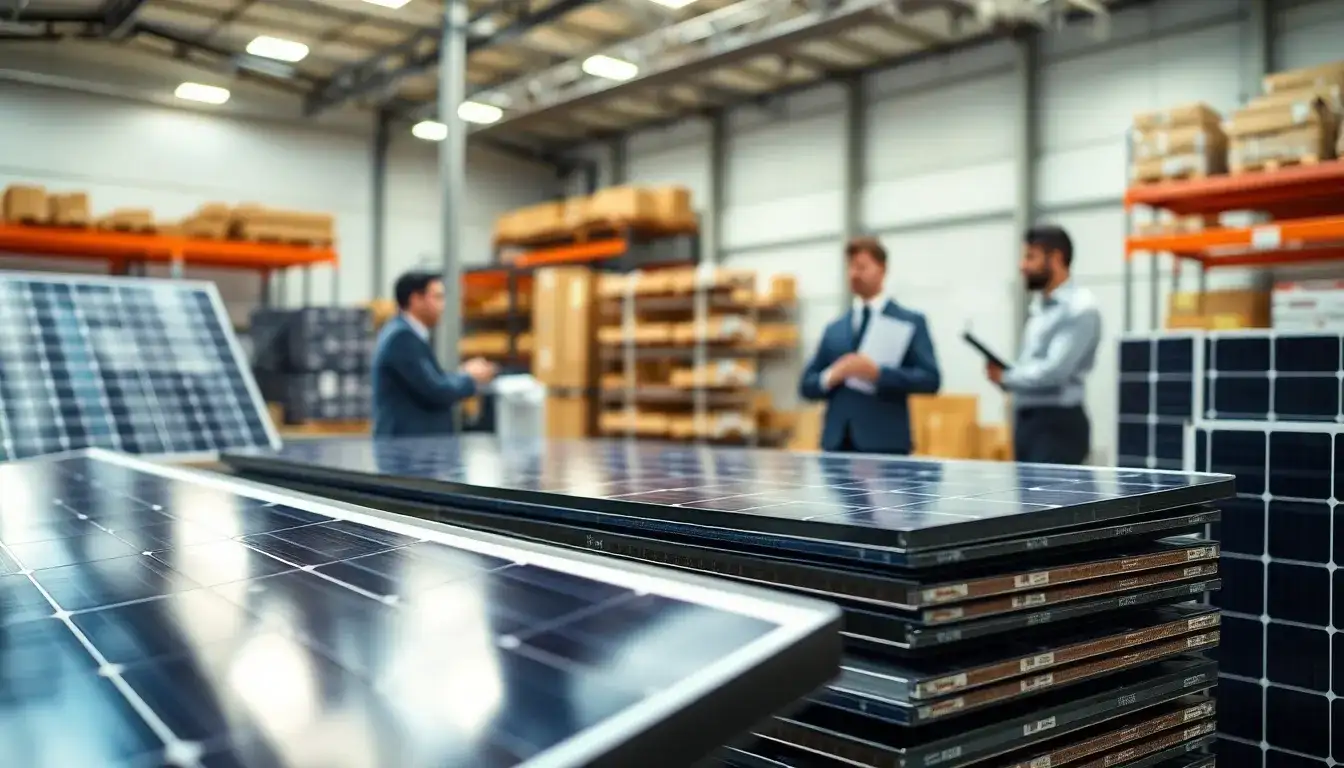
The photovoltaic industry is currently experiencing a surge in demand, leading to a shortage of components and battery cells. With significant policy changes for distributed photovoltaic systems set to take effect on April 30 and May 31, companies are accelerating their grid connections to secure expected revenues. Component prices have risen, with some dealers reporting rates exceeding 0.8 yuan/W, and predictions suggest a peak around 0.95 yuan/W. Additionally, a reduction in polysilicon production and rising costs across the entire industry chain are contributing to this situation. Experts note that while there is a rush to install systems, the overall annual capacity is not expected to see a significant increase, highlighting the need for the industry to maintain self-discipline in production limits.
Recent activity in the photovoltaic sector has been notable, with requests flooding in for battery cells. For instance, a representative from a component factory in Chuzhou has been actively seeking 182mm battery cells, calling for suppliers to step forward. The demand for battery cells is high, and the supply of components is tight, marking an unusual period of shortages in the industry.
Sales representatives from major companies such as Longi, JA Solar, and Jinko are advising clients to place orders quickly to secure available stock. With the upcoming policy deadlines, many downstream dealers report having minimal inventory left, particularly for larger components, which are mostly sold out and require advance reservations. Given the risks associated with futures pricing and potential factory defaults, immediate purchasing of available stock is becoming essential.
This year, two new policies for distributed photovoltaic systems were introduced: the “Management Measures for the Development and Construction of Distributed Photovoltaic Power Generation” and the “Notice on Deepening the Market-oriented Reform of Renewable Energy Grid Connection Prices”. Under the new management measures, projects completed and connected to the grid before April 30 that are under 20MW can still receive full grid access. However, projects connected after this date will only be able to utilize self-consumption or partial grid access options. The notice also stipulates that starting May 31, 2025, all new distributed photovoltaic projects must transact through the electricity spot market.
These policies will directly affect the profitability of photovoltaic power stations, which primarily rely on income from electricity generation, policy subsidies, carbon trading, and asset appreciation. With the elimination of subsidies for grid-connected systems and the uncertainty of market prices, companies are rushing to connect their systems before these deadlines to ensure their expected returns.
According to recent reports, the price of components has seen an increase, with mainstream prices for N-type 182mm components ranging from 0.704 to 0.722 yuan/W, up by 0.01 yuan/W, and for N-type 210mm components, prices are between 0.719 to 0.737 yuan/W, rising by 0.005 yuan/W. Topcon distributed component prices range from 0.764 to 0.780 yuan/W. Overall, March saw a 35% increase in production compared to the previous month, with more orders being fulfilled. Many manufacturers are still focused on reducing inventory while actively accepting new orders.
On March 20, a representative from Trina Solar mentioned that prices for distributed photovoltaic systems had risen by 0.05 to 0.06 yuan/W, with some areas reaching 0.8 yuan/W. However, the specific regions were not disclosed. A representative from Longi Green Energy indicated that most companies are now pricing above 0.85 yuan/W.
When asked about the potential for further price increases, both Trina Solar and Longi Green Energy representatives refrained from providing a direct answer. However, some dealers, like Wang Yang (a pseudonym), predict prices will exceed 0.9 yuan/W, with a possible peak around 0.95 yuan/W. The main concern, as Wang noted, is securing delivery rather than just the price itself. He emphasized the importance of locking in current stock due to the uncertainty of timely deliveries.
“Price differences are no longer the main issue; ensuring delivery is crucial,” Wang stated. He revealed that most models cannot be delivered on time, with only about 10,000 units of available stock in their warehouse. High-power components are in short supply, prompting downstream players to reserve goods from manufacturers, raising questions about their ability to fulfill orders on schedule.
Furthermore, the industry is witnessing a rise in low-quality battery cells from smaller manufacturers and unauthorized components entering the market. Companies like Aiko and Trina Solar have issued warnings regarding the potential safety risks associated with products from unauthorized channels.
Price hikes are not limited to components and battery cells; upstream prices for silicon materials, wafers, encapsulants, and glass are also rising. This price surge is attributed to the self-imposed discipline of leading companies and reductions in polysilicon production. In late December 2024, Tongwei Co. and Daqo New Energy announced technical upgrades and orderly production cuts for some of their high-purity polysilicon projects.
In March, reports indicated that polysilicon production was around 90,000 tons, with continued production cuts providing support for prices. A company in the photovoltaic encapsulation sector has reported full order books for the first quarter, with some orders extending into the second quarter.
While the current rush to install systems is notable, concerns have been raised that the demand generated by the new policies may simply be pulling forward future capacity demand. Some industry experts believe that the impact of this rush on total annual installation numbers will be minimal. They argue that the current supply-demand imbalance is a temporary fix rather than a long-term solution, emphasizing the need for the industry to maintain disciplined production limits.
In summary, while the photovoltaic industry faces a period of price increases and supply shortages, the overall long-term impact on total installations remains to be seen. It is crucial for leading companies to act responsibly to avoid exacerbating market volatility.







